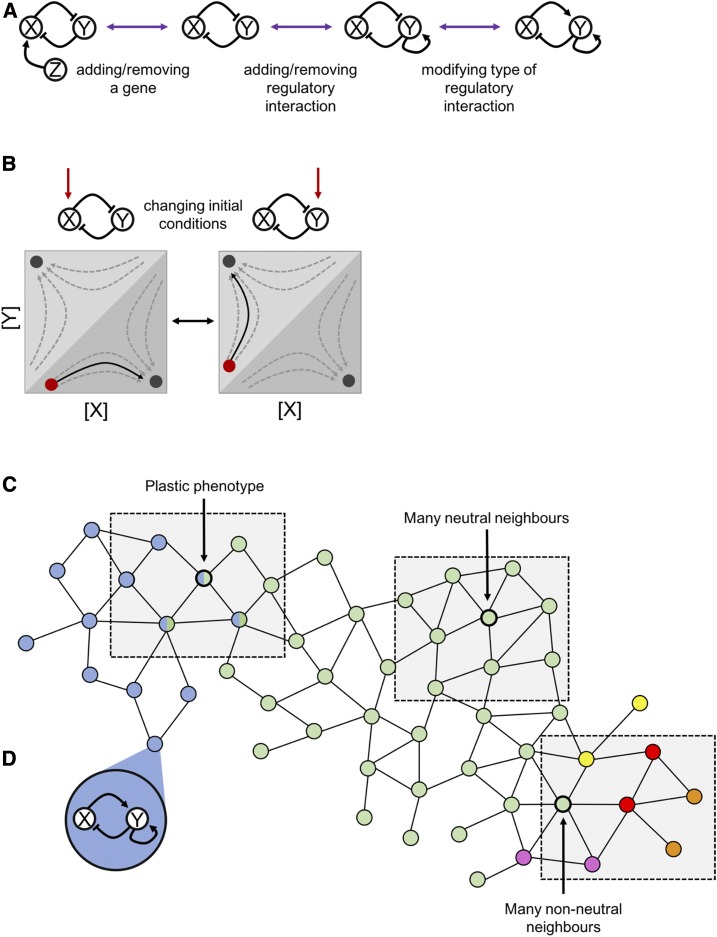Figure 3.
Regulatory networks, their topology, dynamics, and connectivity via mutation. (A) A regulatory network with nodes (e.g., genes) connected by regulatory interactions can be considered a genotype. Mutation to the genotype is represented by a modification in the network topology, for example, by adding or removing regulatory interactions or by modifying the interactions from suppression to activation. Pointed arrows represent activation, while those ending in perpendicular lines show suppression. (B) A regulatory network has a phase space, here represented by the concentrations of molecules encoded by the two genes. The flow of the phase space (gray arrows) describes what trajectory (black arrow) from the starting point (red circles) the system will take as it reaches equilibrium (“basin of attraction”; black circles). Which of potentially several equilibrium states is reached can depend on external conditions, such as the concentration of the activating substance (red arrow and red circles). (C) Connecting regulatory networks (A) to other regulatory networks that differ in only one regulatory change results in large “network-of-networks” or genotype networks. Real genotype networks are very large so two dimensions can only represent a small part of all possible genotypes and how they are connected by mutation. In this hypothetical example, each node represents a single regulatory network, with the color indicating its phenotype. Edges connect regulatory networks that are related by a single modification of their topologies, as represented in A. The properties of these genotype networks determine how likely it is that an alternative phenotype can be reached through mutation. The three shaded areas represent, from left to right, (i) a boundary region between two distinct phenotypes where some genotypes can produce both phenotypes; (ii) a region of genotype space where mutations (i.e., changes in topology) are phenotypically neutral; and (iii) a region where a change in topology can produce several distinct phenotypes that are not accessible from other parts of the network. (D) The regulatory network of this node in the genotype network. ‘A and B are based on representations in Jaeger and Crombach (2012) and Jaeger and Monk (2012) and C is based on representations in Wagner (2011).

